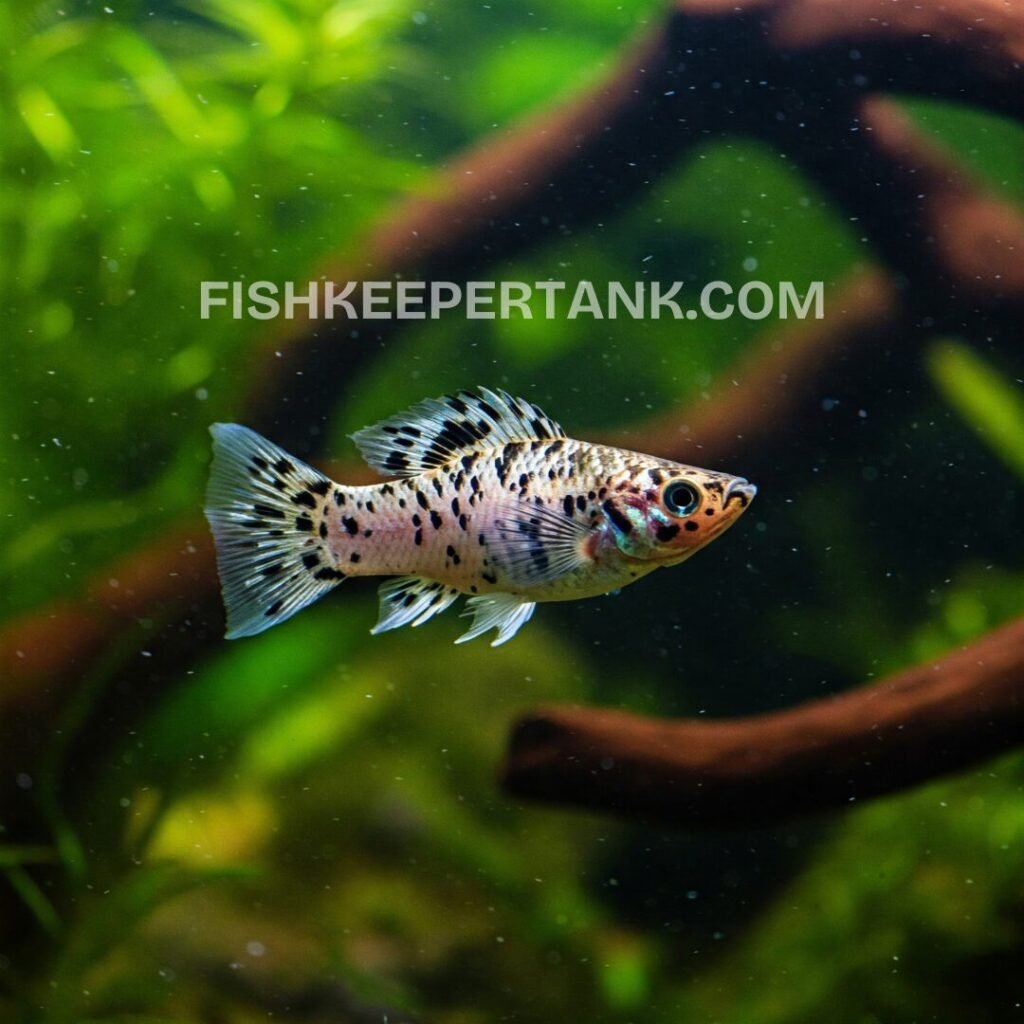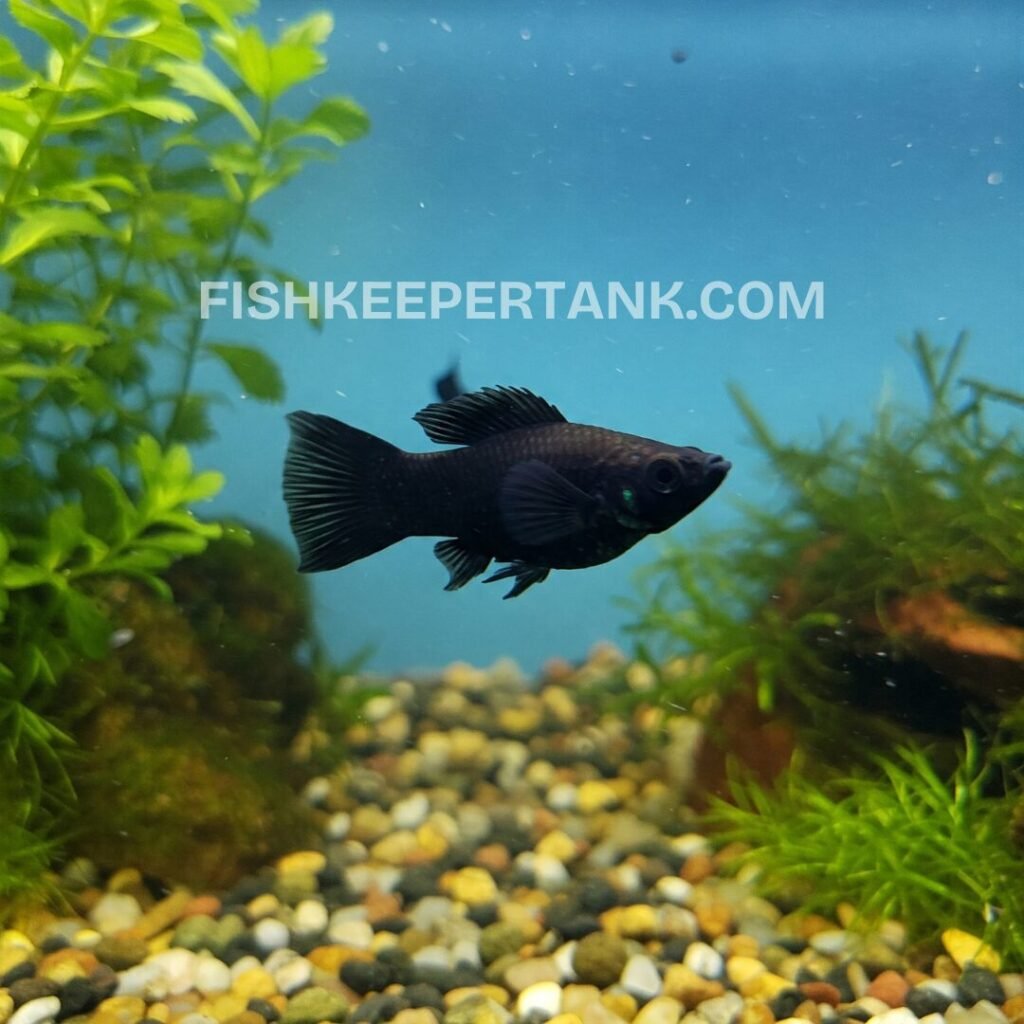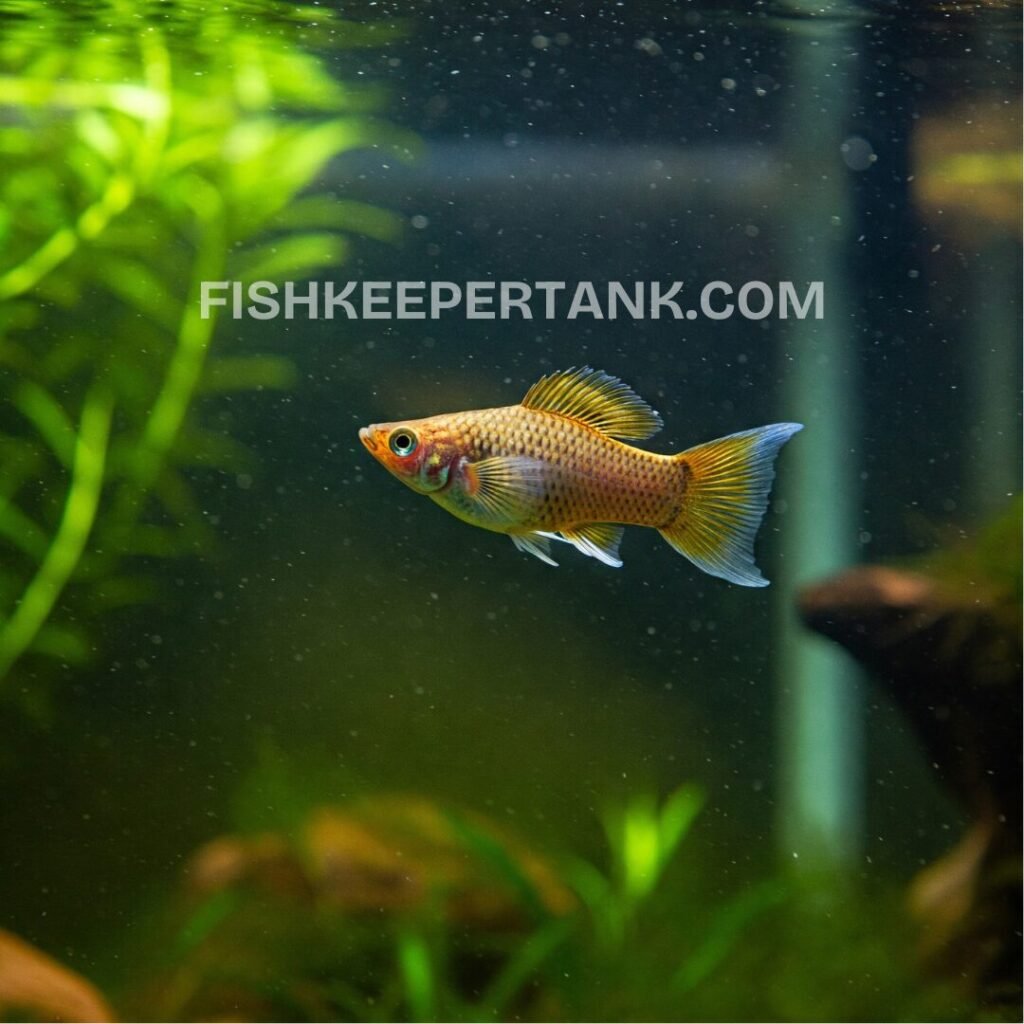Introduction
Freshwater fish owners count Mollies as their top favorite because these fish adapt well to different tanks and display attractive bright colorations while staying active. Aqua lovers ask themselves if Molly Fish requires water movement in their tank or “Mollies Like Current or They Don’t?” Their acceptance of water currents depends on the combination of their specific type and the conditions inside their tank plus their particular water tolerance.
Our exploration: “Do Molly Fish Like Current? Mollies Like Current or They Don’t?” explains how Molly Fish respond to water currents and environments where they live naturally, plus your choices for setting appropriate current levels.
Key Takeaways
- Molly Fish exist naturally in environments with light water movement and easy-going river currents.
- The way Mollies respond to the current depends on the individual fish and the pace of water movement.
- Water currents enhance oxygen supply and active swimming along with natural living conditions for Molly Fish.
- Strong water movement exhausts Molly Fish and makes feeding harder because of their energy loss.
- Taking care of current strength through filters, pumps, and decorations is necessary to keep Molly Fish healthy.

Molly Fish Habitat
We need to examine their natural habitat to determine how Molly Fish respond to water currents. Mollies show a clear water current preference depending on whether they live in nature or a tank.
In The Wild
Wild Molly Fish exist in different water environments, including freshwater rivers, brackish coastal zones, and still stagnant ponds. Mollies prefer gentle flowing water conditions, unlike active swimmers who need faster-moving waters.
- You will find these Mollies naturally where river currents flow gently through estuarine and low-energy streams.
- Many hiding places combined with gentle water flow make ideal living spaces for them.
- Brackish waters combine freshwater and saltwater despite having weak water currents.
- The natural environments of wild Mollies experience minor water flow but cannot handle high-speed currents like river fish types do.
In Captivity
Aquarium filters and pumps that create water flow help maintain suitable environments for Mollies in their tanks. Depending on the type, Mollies require gentle water movement but require protection from powerful water currents. Captive Molly Fish need:
- A water flow lower than fast that matches outdoor conditions benefits their comfort.
- Correct filtration designs should match their needs, as strong currents harm their health.
- Plants and decorations form quiet resting areas for the fish.
Do Mollies Like Current?
The answer to this question is that Molly Fish has specific current requirements. Most Molly Fish do well with gentle flows yet require little or no current to stay happy. A soft water flow supports their health, while powerful water movements quickly wear them out. Various Molly species live well in gentle water flows but do not thrive in areas with active water movement.
Watch the Molly Fish closely when your aquarium runs a powerful filter or pump. When Molly Fish continues to fight against water flow and take shelter repeatedly, it shows the current pressure is too intense.
- Molly Fish gain benefits from slow-moving water.
- A soft water flow helps Molly Fish thrive, yet strong currents would harm them.
The Orange Betta Fish
Reason Why Molly Fish Like Water Current
Simulates Natural Habitat
A small water flow enables fish to experience the natural swimming conditions of rivers and shoreline areas. They exhibit their natural behavior more easily because of the comfort provided by the water current.
Young Molly Fish Need Current
A small water flow assists baby Molly Fish (fry) during their muscle strengthening and development stages. Excessive water flow will impede their feeding attempts by moving Mollies around.
Exercise and Activity
A gentle water flow motivates Mollies to exercise, thus keeping them healthy and preventing weight problems. The water current evenly spreads food and oxygen throughout the tank.
To Escape Predators
The natural behavior of Molly Fish depends on currents to protect against predators. Gentle water movement in an aquarium triggers Molly Fish instincts by making them active and focused.
Improved Oxygenation
The water movement encourages better oxygen exchange to keep Molly Fish healthy. Multiple fish and high-temperature environments need this feature foremost.
Feeding and Hunting
A light water flow helps food spread all around the aquarium to match how Mollies eat naturally. Waterborne particles drift past Mollies when they live in their natural environment.
Betta Imbellis: “The Peaceful Betta”

Drawbacks Of Water Current For Molly Fish
High water currents create challenges to keep Mollies healthy in these conditions.
- Overuse of energy reserves occurs when they fight against strong water movement.
- High water flows prevent Mollies from reaching their food easily.
- Long-lasting exposure to strong water currents creates stress in Mollies, harms their fins, and decreases their health.
What Flow Is Best For Mollies?
Molly Fish need only a light water movement for ideal conditions. This means:
- A very slow-moving filter that produces smooth water flows.
- The tank should have spaces with slow-moving water for fish to relax.
- Add bubbles and air stones in selected areas to maintain oxygen levels without creating powerful water flows.
How Much Water Current Can Molly Fish Tolerate?
When faced with solid water movement, Mollies remain healthy only within low to moderate conditions. Look for behaviors that show strain, including difficulty with movement, seeking cover constantly, and swimming atypically.
- Struggling to swim
- Constantly hiding
- Unusual swimming patterns
When your fish displays these symptoms, look for ways to lower the water flow, like changing filter settings or placing plants and decorations.
What Causes Current in a Fish Tank?
1. Water Current:
Aquarium Filter
An aquarium filter creates almost all of the water circulation in the tank. These devices enable you to set the flow speed to manage fish tank movement. Do Betta Fish Need A Filter To Survive?
Air Pump
Air pumps release bubbles that naturally produce weak water movement. Do Betta Fish Need a Bubbler or Air Pump?
Powerheads
Use powerheads with caution when keeping Molly Fish because these devices produce intense water flow.
Air Stones/Diffusers
These provide oxygen but also create light water movements.
2. Electrical Current:
Faulty Equipment
Electrical leaks from damaged heating and filtering systems make Molly Fish behave differently.
Improper Wiring
Poor electrical connections create dangerous power flows through the water.
Induced Voltage
Electrical devices near the tank can produce small electric currents in the water.
Static Electricity
Water tends to collect an electrical charge, but this occurrence is exceptionally uncommon.
3. Other Reasons:
Bigger Fish
Size and speed determine when large fish stir up water movement.
Loss of Water
When water is lowered in the tank, it changes the direction of water movement.

Guide to Reduce/Maintain Strong Current in a Fish Tank
- Use a sponge filter to reduce the water’s movement.
- Readjust the filter setting to prevent disturbance in the water.
- Enhance the space with living plants or decorative items to weaken currents.
- Use large rocks or tilted driftwood pieces to create calm sections in the tank.
How To Tell if a Molly Is Stressed
- Hiding excessively
- Swimming erratically
- Losing appetite
- Clamped fins
Stress in Betta Fishb
Care Tips For Molly Fish In Fish Tank
- Keep a stable temperature.
- Provide a balanced diet.
- Monitor water quality.
- Ensure a gentle current.
Conclusion
Molly Fish respond well to water flow at light levels. Molly fish do need water flow yet need limited strength. Mollies do enjoy limited water movement yet they need weaker currents than river fish that are bred for challenging conditions. The proper amount of water movement in their tank lets Molly Fish live in their preferred conditions while getting better oxygen and staying busy. An excessive current flow creates mental stress for Mollies which makes them tired and affects their eating pattern. A well-controlled water flow system benefits Molly fish and supports their health as well as happiness in your aquarium.
Frequently Asked Questions
Can Molly Fish live in strong currents?
No, strong currents can stress them.
What will happen if there is too much current in the tank?
Molly fish prefer gentle water currents. If the current is too strong, it can stress the fish and make it difficult for them to swim. This can lead to health problems, such as fin rot and ich.
What are the signs that water current is affecting molly fish?
Fish struggling to swim
Fish hiding in the corners of the tank
Fish gasping for air at the surface of the water
Fish fins are clamped to their bodies
Fish are not eating
Do Mollies need an air pump?
They benefit from oxygenation, but it’s not mandatory.
How do I reduce the water current in my tank?
Use decorations and adjust filter settings.
Do all Molly Fish like current?
Preferences vary by species.
Can high currents kill Molly Fish?
Yes, prolonged stress from strong currents can be fatal.
People Also Read:
Betta Fish Cloudy Eyes
Dropsy In Betta Fish
Do Betta Fish Sleep? Betta Fish Sleep Guide
Betta Hendra
Betta Fish Fin Rot
Betta Fish Water Change Guide
Betta Fish Constipation: Betta Fish Not Pooping

